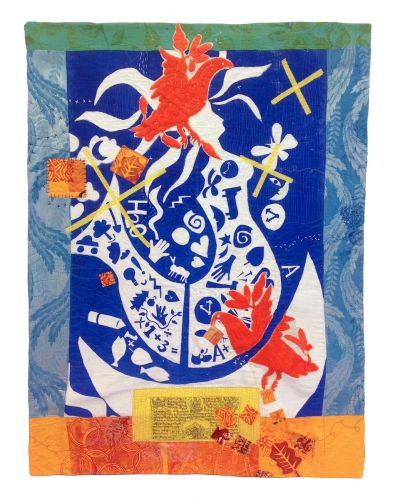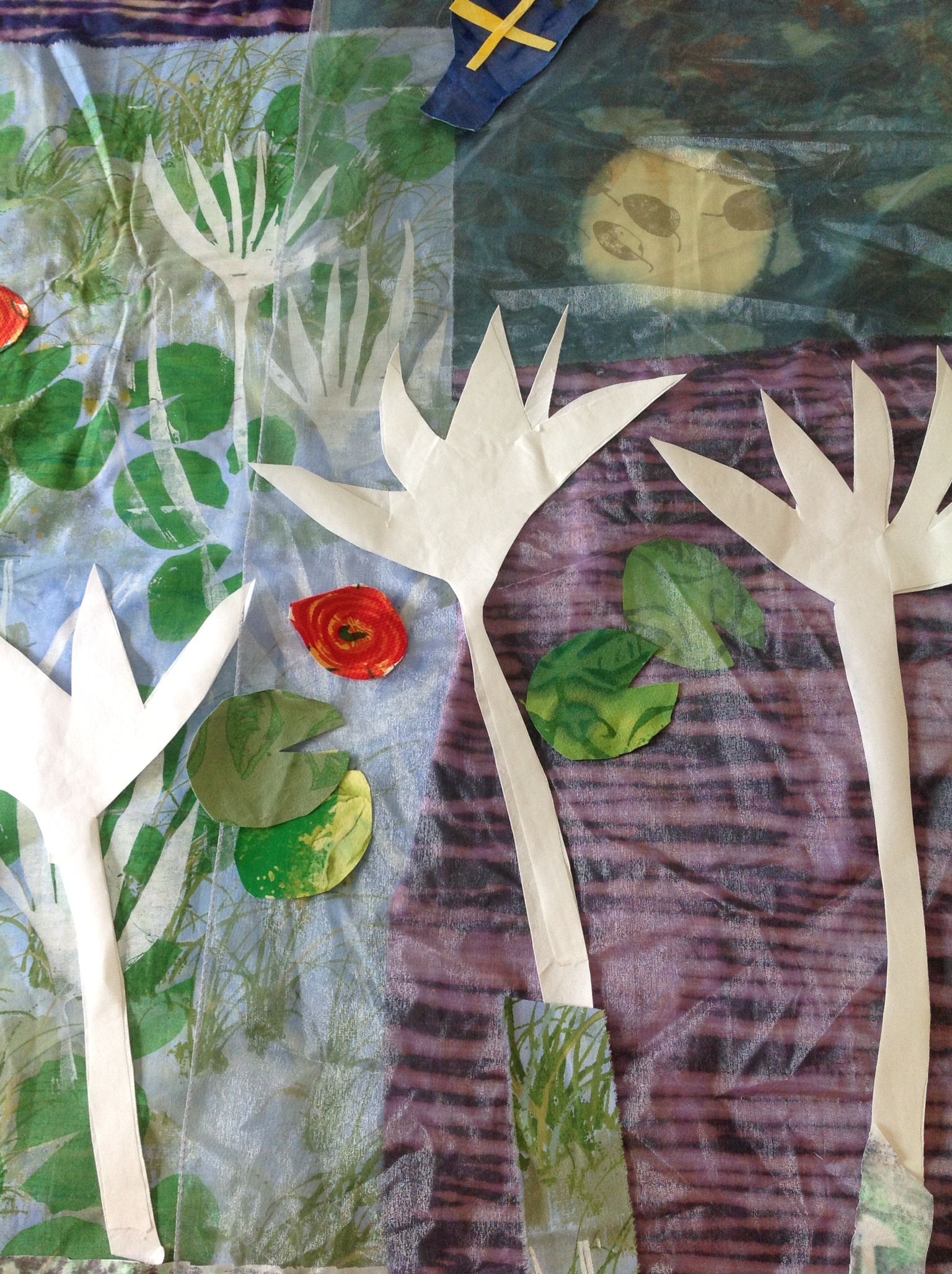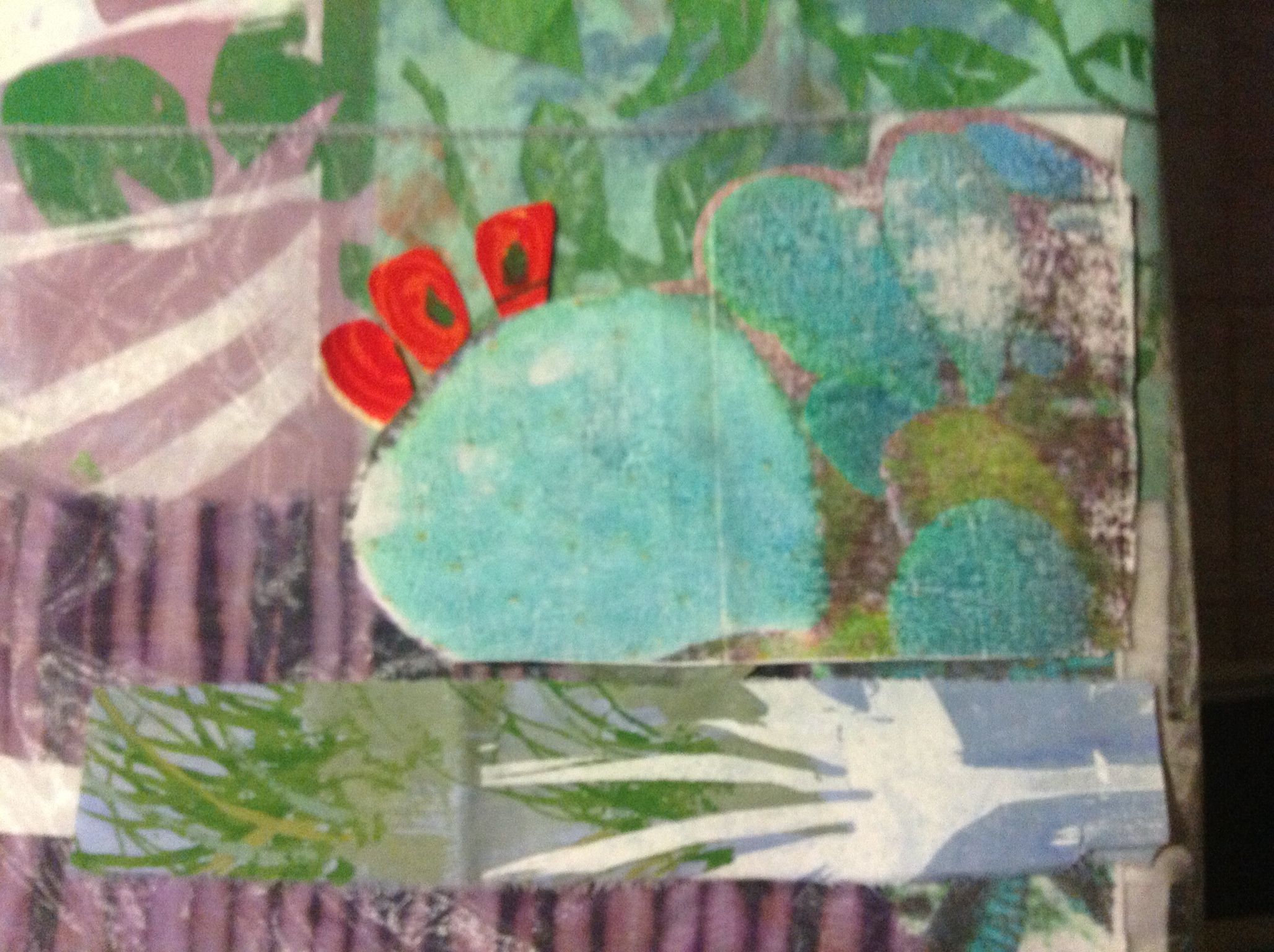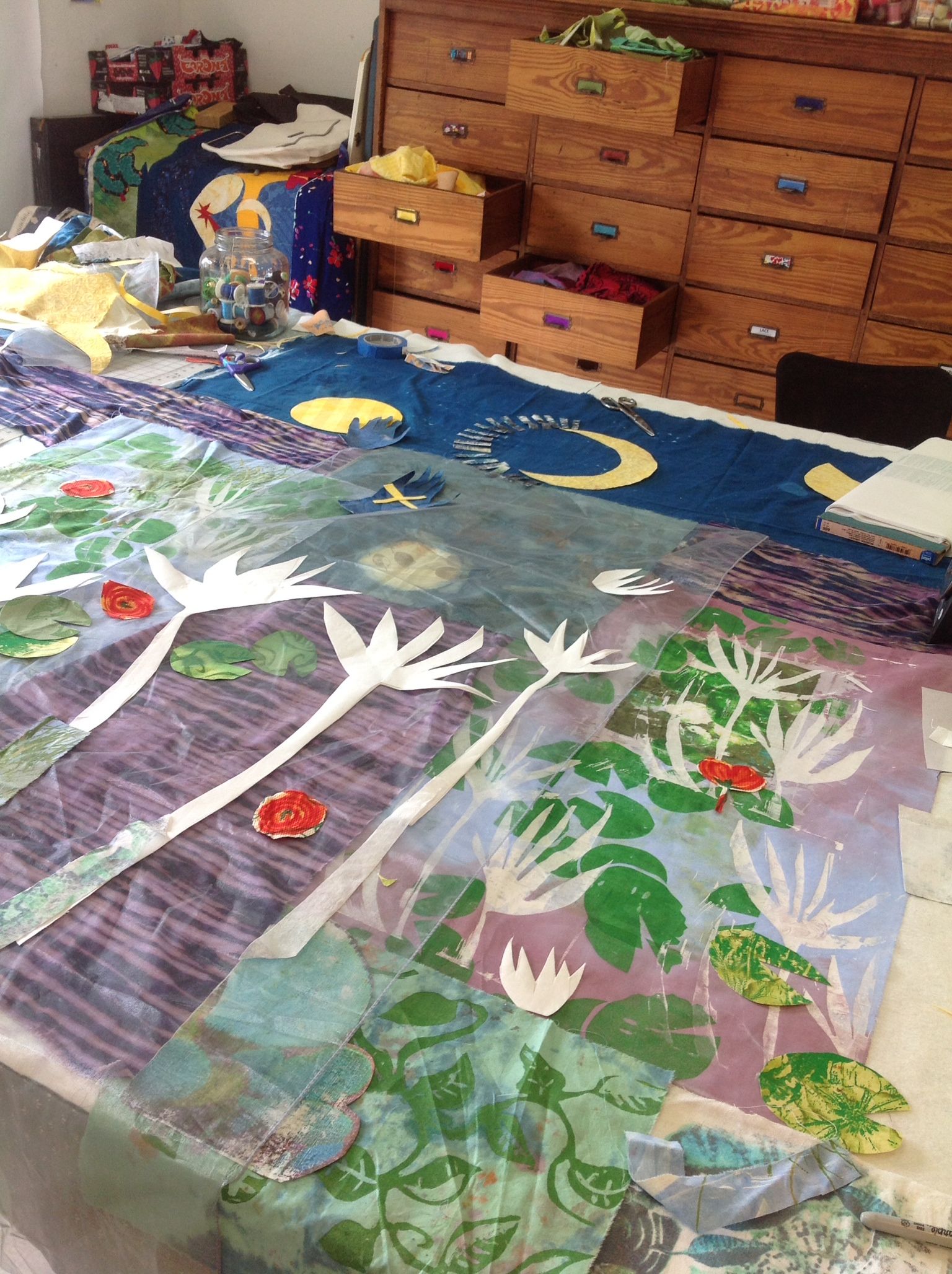One of the most-read posts I've made on this blog has to do with my process of making an art quilt. Interesting enough, the piece I was working on (a large Virgin/pomegranate figure) got stuck in the middle, even as I was writing about the process.
Did I tell you about that? Nope, don't think so.
I finally finished the piece after about 5 months of mulling and muttering, just in time for it to go into an invitational exhibit at the Kerr Arts and Cultural Center. Then, as is a sneakly (surprises me, every time) and productive little pattern of mine, I quickly made two other related pieces, spin offs from the theme that emerged as I was mulling and muttering (and as you will see, slashing off about one half of the original quilt).



These are all inspired by the story of Persephone, her acceptance of her role as Queen of the Underworld, her visit over the River Styx and her mother Demeter's weeping over the loss of her daughter.
The colors are off in these photos, silly me, I shot the pics with the pieces on the new brilliantly chartruese walls in my hallway, which taught the camera some weird color tint, and I couldn't quite adjust them back. So, that's a good reason to go to Kerrville to see the originals, right?
Then, as I prodded along on my also stalled-out-for-months online course, TEXT ON THE SURFACE, I finally made it the next to last chapter and did another stab at describing my process of design and production.
Here it is. Hope you enjoy this flurry of self-examination on my part, and that it inspires you to consciously think about and write about your own process of work and how you got there. If you post something on a blog or website, please leave a link in the comments, so we can share each other's insights and an appreciation of the diversity of our creativity. So here it is, straight from the auxillery info in the course:
How I make an art quilt (and why I got that way):
Let’s start with the history - I come to quilting from an art background, as a painter. I never have learned proper quilting skills I fear, though I am getting better with piecing and bindings and the like!
Even in my undergraduate studies as a studio art major, I was drawn to stitch -- my senior project and exhibit was actually an installation or large stained canvases and stitched and sewn stuffed sculptures that were made from paper bags (need I mention that I was in art school in the late ‘60s).
I formally entered the world of textile/fiber art with I started studying with Jane Dunnewold and with the guest artists she brought to the Southwest Craft Center (now Southwest School of Art and Craft). I started dyeing and printing fabric and then had to have something to do with it. Not being a garment mater (due to bad early history in Home Ec in the 8th grade) I thought I would try making wall hangings -- and I had done a lot of collaborative fabric stitched pieces with kids during my career in arts and education. I took a weekend workshop from Sue Benner and discovered for the first time the world of WonderUnder, and that I did’t have to be good at sewing to make a quilt. And that I didn’t have to bind the edges.
So that set me free and I developed my approach over the past 12 years. When I turned 50 I decided that if I was ever to be a “real” artist and do my work, I had to stop working full time for other companies, nonprofits, etc, and just leap on faith that I could support myself somehow as an artist. So far, it’s worked.
So, on to the work:
I start always with an inkling of an idea or story or theme, then I play with colors and textures. piling up fabrics that catch my eye and please my color sensibilities. Most of the fabrics I use are recycled from something else, then dyed, stamped, stenciled, screen printed, etc. I use a good deal of ethnic embroidery, embellishments and pieces of hand-woven fabric from indigenous people around the world. Almost all of these treasures I find at thrift stores.

The majority of my dyed and printed yardage also starts with recycled fabrics -- table linens, dresses and skirts, botls and scraps tucked away at flea markets, old cotton sheets and even mattress covers and old quilts for the batting layer. I like it that the fabrics I use have history, stories I don’t even know about. I do buy some new shantung silks from Indian sari stores, usually overdyeing the original color with a wash or glaze of something else. I also purchase bolts and bolts of fusible webbing, new batting and, sometimes, felt for lining small quilts.

My art quilts are totally non-traditional. I fuse every layer, then free motion quilt them, catching the edges of all the fused pieces. In order to make the quilt as flat and unwrinked as possible, I often”build” the quilt on the batting, designing as i go and fusing as I go, cutting the shapes (sometimes from patterns drawn on the fusible web paper) while still adhered to the release paper or backing paper. I don’t generally have an allover design on paper, but sometimes I work from smaller studies, adapting the design to the new scale.

My stitching is usually very loose, though I like to use it as a kind of drawing tool, adding veins to leaves, lines to hands, sun rays, flower details, wind currents and waves. I put the feeddogs down and use an machine foot with a round opening and put the setting on darn, with everything else on “0”. Probably my favorite stitch pattern is a looped back on itself spiral. I really think of the quilting as a kind of scribbling over the surface of the quilt, adding the design element of line and texture. I sometimes take large pieces into the local quilt shop and rent their longarm machine (I’m lucky to have such a resource that is very reasonably priced -- $10 an hour) and do a lot of quilting to get the piece connected with one color of thread -- usually a varigated one -- then I get the quilt home to my Bernina and add more detailed quilting.
When the whole piece is quilted, I take another look, then go in with hand stitching, embellishments occasionally, and over printing with screen-printed patterns or details for more texture -- or to add a little energy to any boring parts of the quilt. I don’t like to have areas that are too quiet.
I use the same techniques on fabric paper/cloth paper as I do with fabric and I like to combine unusual fabrics, papers, photos on fabric, etc. This use of a wide variety of materials is probably one of the signatures of my style. My smaller pieces are often wrapped and stapled around wooden internal frames, built of white wood, nailed and glued. I then blind stitch a backing fabric over the back of the piece, which finishes it more like a proper quilt. I started doing so at the recommendation of Arturo Sandoval who critiqued some of my work when here in San Antonio for a workshop at the Southwest School of Art and Craft. He convinced me that while painters don’t need to finish the back of their canvases, we who are working out of the quilting tradition should do so, because it is just part and parcel of the tradition.

My neighbor Rick Murray is my construction expert. He makes the internal wooden frames that I stretch my smaller pieces around. When I use the frames, I don’t put a fabric back on the pieced quilt. just the batting layer, since it is often a piece of recycled mattress pad from the thrift store!
Like Benner, I finish the edges of my larger, none-frame-mounted pieces with layers and layers of zigzag stitiching around the cut edge of the finished piece. I don’t trim and cut a piece until it is quilted and when I work for a particular size to enter in an exhibit I make the quilt a couple of inches larger in every direction, then cut it to size at the end. I stitch the edges with varied colors of threads and change the width and stitch count often as I stitch around the edge. This is the boring, or shall I say, meditative part of my process!












































